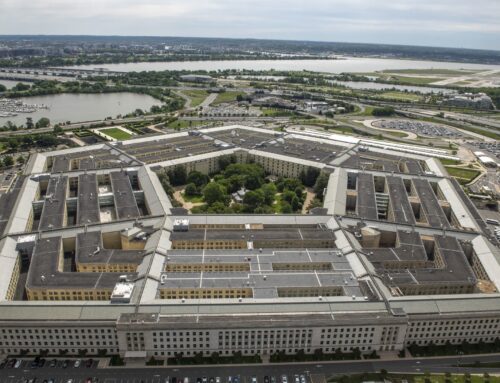When reports surfaced in February that the President’s budget would include a significant cut to the number of F-35’s requested, it seemed too good to be true. But as it turns out, when the Pentagon is forced to tighten its belt, a plane that’s only mission capable 55 percent of the time is a logical place to start.
Last year’s Air Force budget justifications included plans to procure 48 F-35As in 2025, and last year’s Navy budget justifications included plans to procure 16 F-35Bs and 19 F-35Cs in 2025, for a total of 83 new F-35s. This year’s request only includes funding for 68 new F-35s. Broken down by service branch and variant, the Air Force is requesting 42 F-35As, and the Navy is requesting 13 F-35Bs and 13 F-35Cs. That comes out to about $583 million in taxpayer savings without breaking a sweat.
The F-35 has a long history of problems, from mechanical issues, to maintenance challenges, to schedule delays, to cost overruns. One of them even went AWOL when a pilot was forced to eject over the skies of South Carolina and the plane, which was set to autopilot, kept on flying.
Setting aside its astronomical cost (projected at $1.7 trillion over its lifecycle, the F-35 is the most expensive weapon system ever built), the mission capable rate is perhaps the most serious concern with the program. This rate is the percentage of time that planes in the fleet are able to both fly and perform at least one of their missions. A Government Accountability Office (GAO) report released last fall found that on average, the F-35 is only mission capable 55 percent of the time. The full mission capable rate, the percentage of time the planes can fly and perform all of their assigned missions, was 30 percent on average from September 2022 to September 2023.
These languishing mission capable rates are a result of several sustainment and maintenance issues. Because the Pentagon started buying F-35s while they were still in development, a process known as concurrent development and production, the technology on the F-35 is in constant need of upgrades. As of April 2019, fielded F-35s came in 39 different configurations as a result of the ongoing development and fielding of new components and mission software. This complicates and slows down maintenance operations on the planes, reducing the number of planes that are able to fly at any given moment.
Further hamstringing maintenance on the F-35 is the reality that the Pentagon doesn’t have all of the proprietary data associated with F-35 sustainment. As a result, it often relies on contractors to perform maintenance on the planes or needs to file requests for technical data with the contracting company, both of which impact maintenance timelines and thus fleet readiness.
Whether or not the Pentagon can eventually meet its mission capable rate goals for the F-35 remains to be seen, but until it addresses this and a range of other issues, cutting back on F-35 procurement is the fiscally responsible approach. A pivotal question is whether Congress is prepared to uphold this cut as it crafts its budget for FY2025, or whether it will prioritize industry profits and parochial politics over taxpayer interests and national security. The other pivotal question is whether the Pentagon and Congress will simply try to make up for this reduced funding by padding the F-35’s budget in subsequent years. We’ll be watching closely.











Get Social